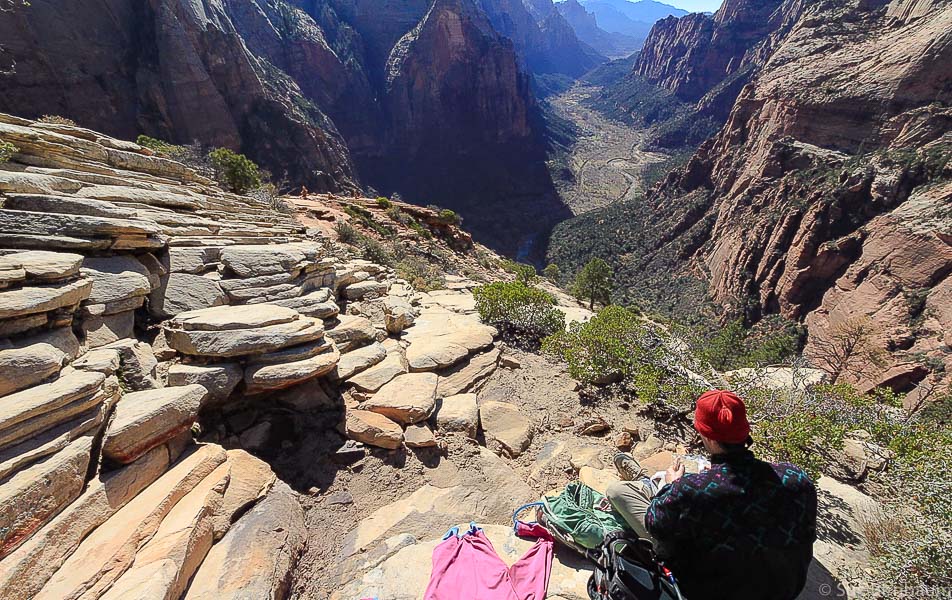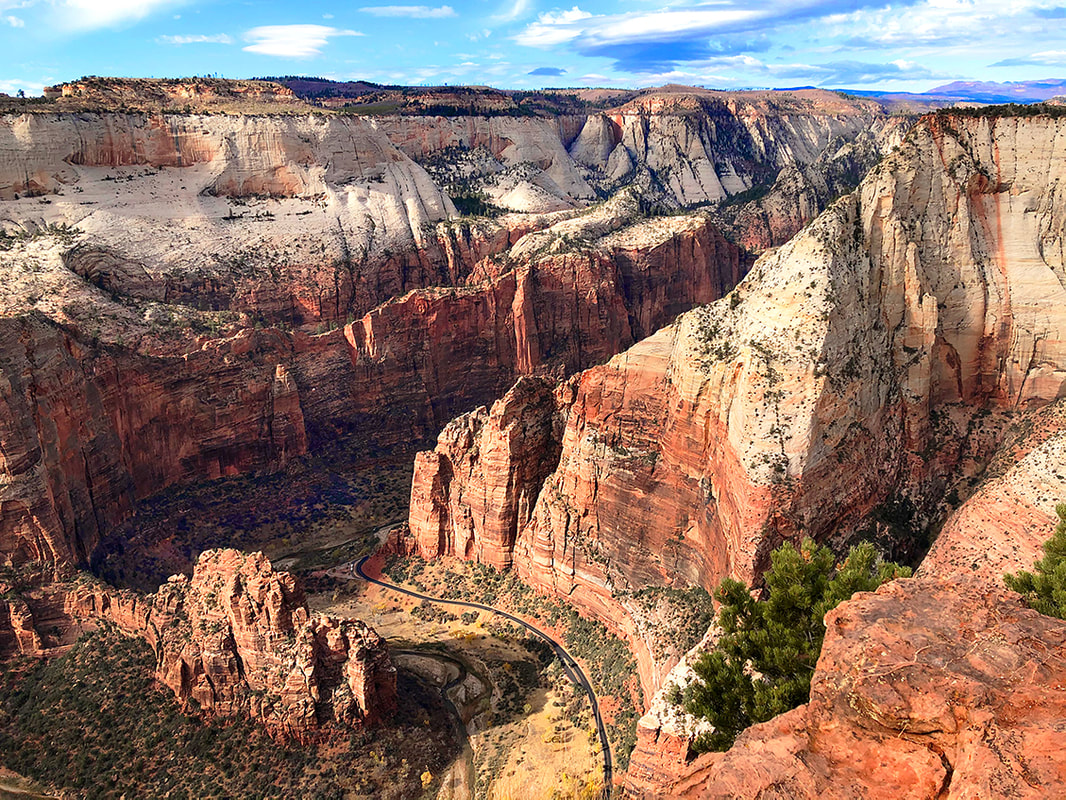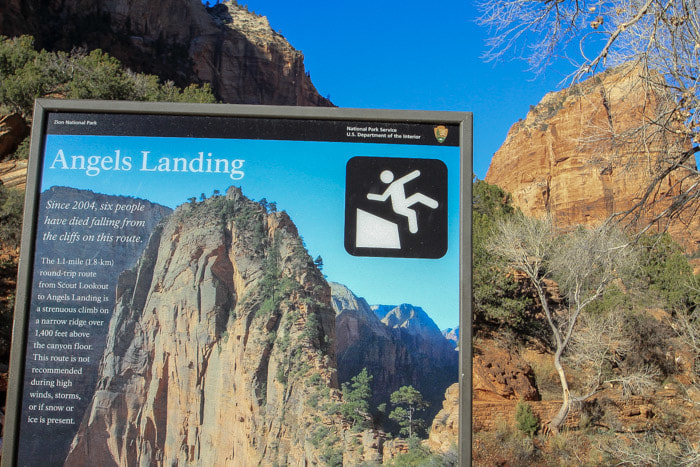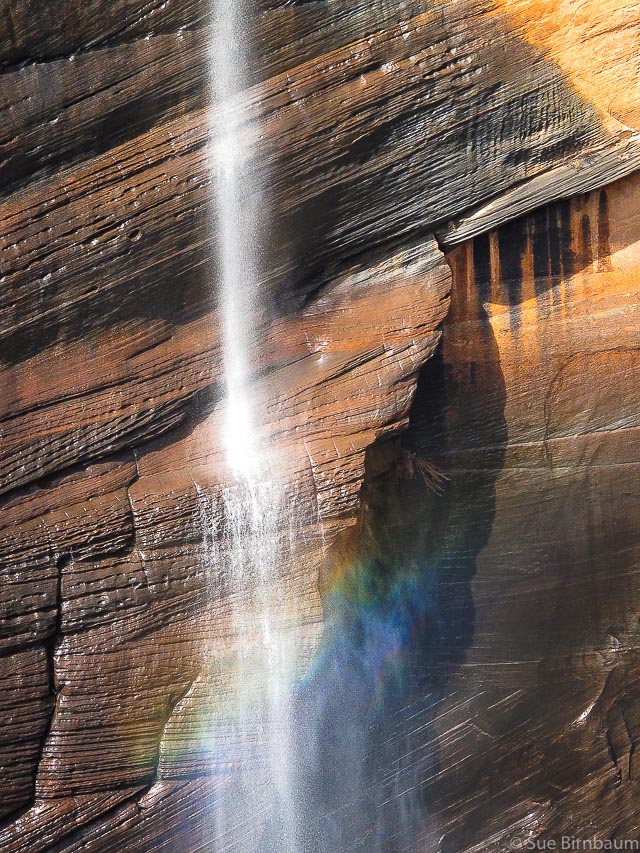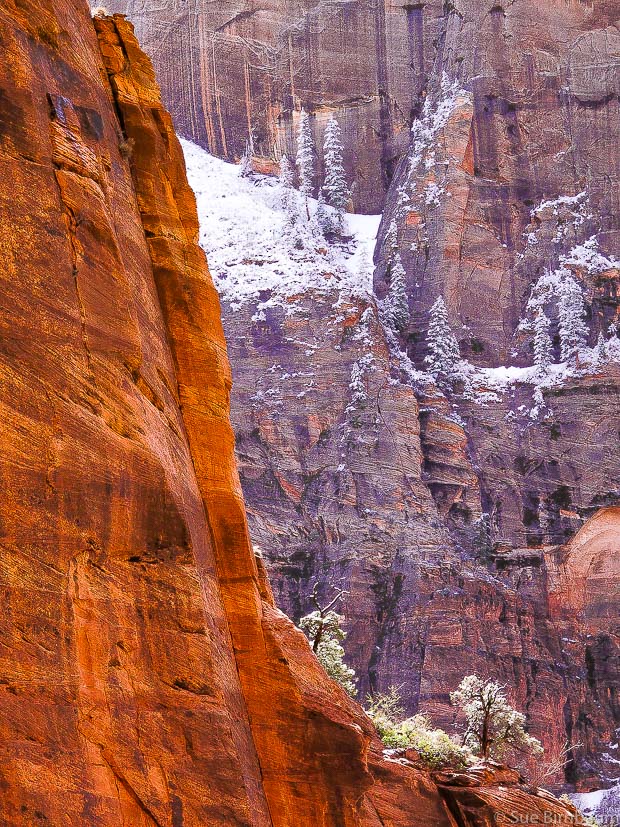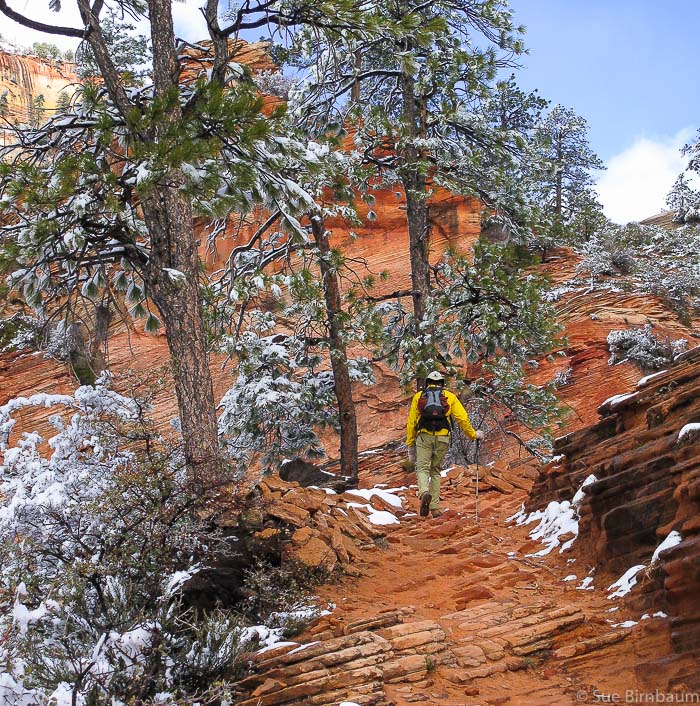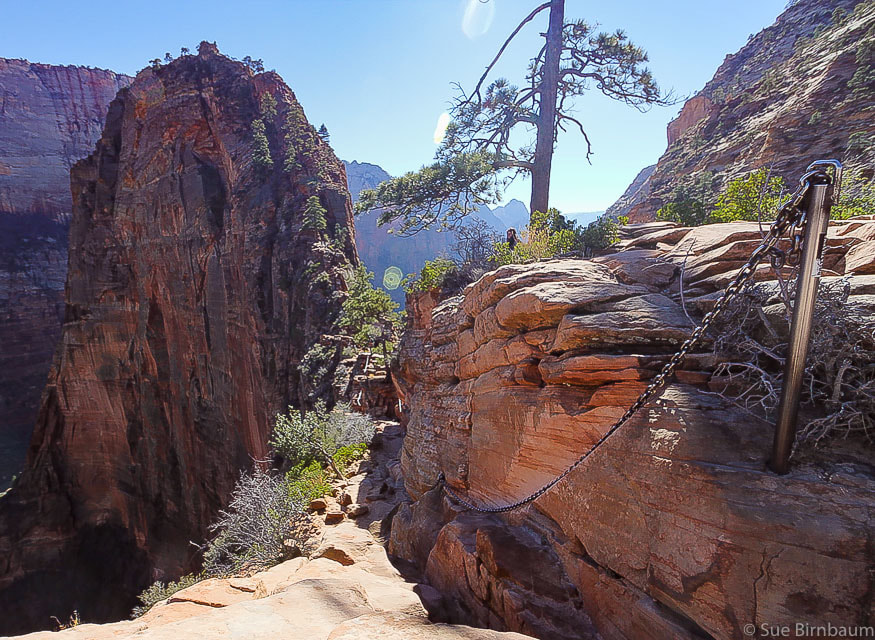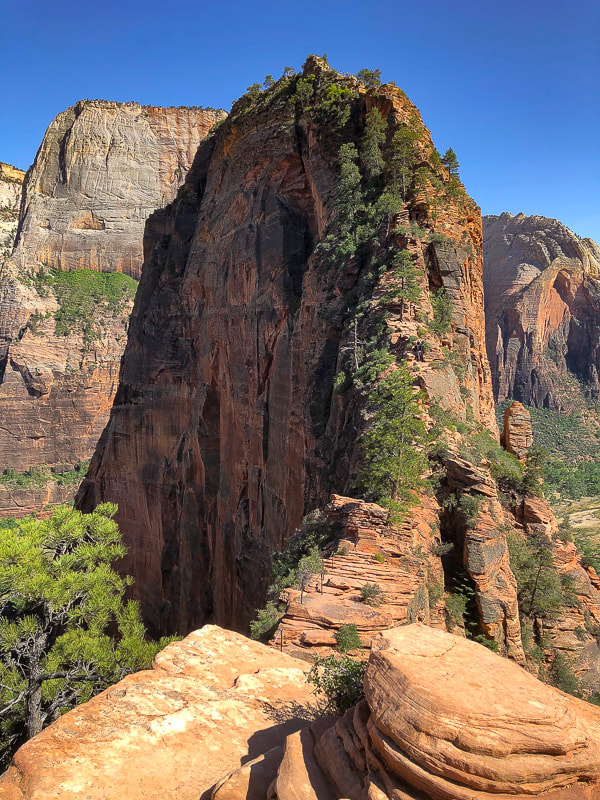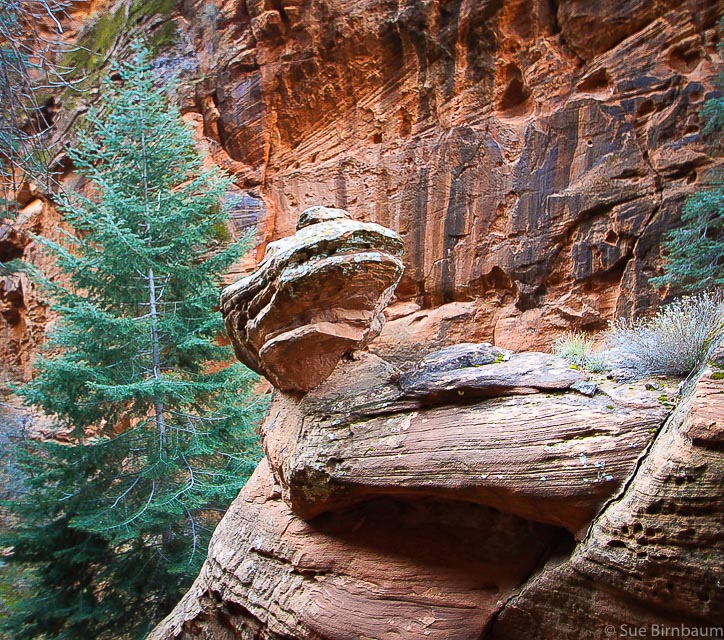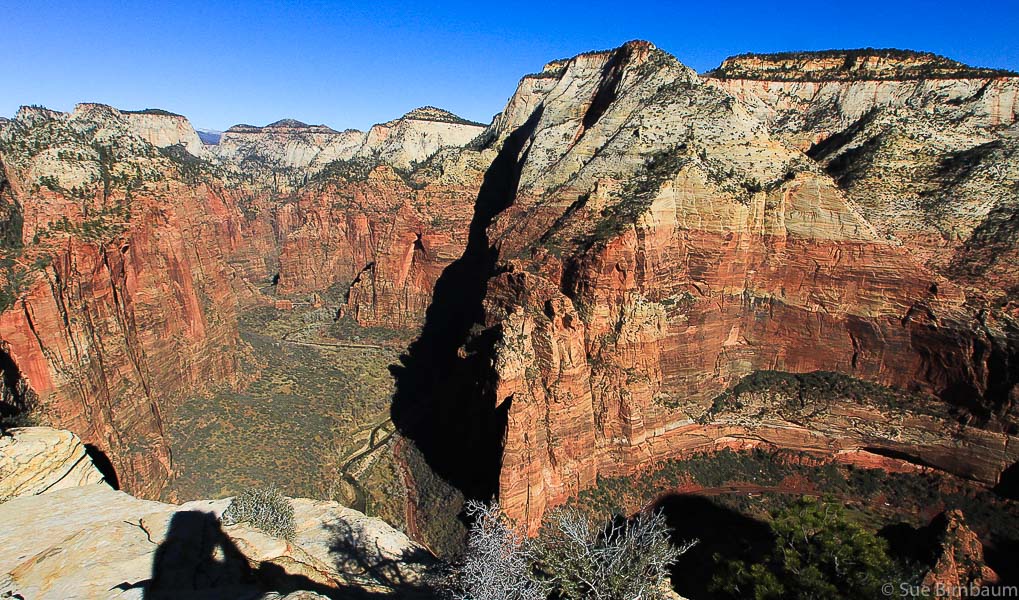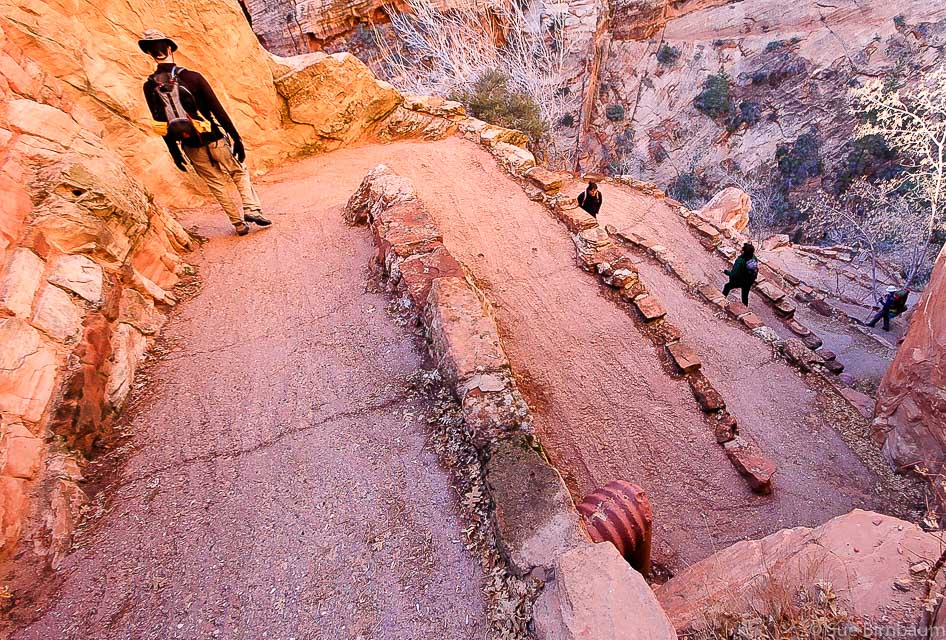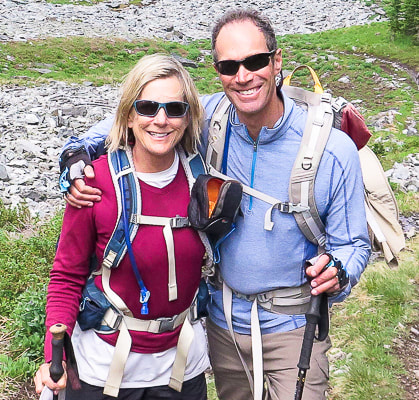|
Breathtaking view of Zion Canyon in Zion National Park; if you don't mind steep drop-offs, this hike's for you! Trip Stats:
Top of Angels Landing - Zion National Park Looking down Zion Canyon View of Zion Canyon from Cable Mountain, Zion National Park Angels Landing lower left Utah's Red Rock Country Angels Landing, the summit of a towering slab of orange and yellow Navajo Sandstone rises almost 1,500 feet from the floor of Zion Canyon in Zion National Monument. At first glance, it looks as if someone took a flat chunk of rock and tilted it up 90 degrees to rest on its side; however, if you study the rock more closely, you can see the relatively horizontal cross-bedding of sand layers that were laid down 180 million years ago. When you stand at almost the highest elevation in the park, Observation Point, you can look down onto Angels Landing, 700 feet below your boots. From this vantage point, Angels Landing is a fin of vertical sandstone. From any vantage point, it seems impossible that there would be a hiking trail to the top, but in fact, people have been hiking Angels Landing since the trail was built in 1926. Warning sign at the West Rim trailhead in Zion Canyon, with Angels Landing in background Fred and I were fortunate enough to hike Angels Landing the Monday before Thanksgiving. We were trying to remember how many times each of us had been to the top. I did my first Angels Landing hike nearly 20 years ago, and Fred the same. We have done it about 3 or 4 times since, and each time we are reminded what a special and spectacular hike it is. However, 20 years later, a lot more people know about the trail, and it has become a destination for many a Zion hiker. At the trailhead, a sign warns hikers of the perils that lie ahead. The sign reads: “Since 2004, six people have died falling from the cliffs on this route. The 1.1 mile round-trip route from Scout Lookout to Angels Landing is a strenuous climb on a narrow ridge over 1,400 feet above the canyon floor. This route is not recommended during high winds, storms, or if snow or ice is present.” Waterfall in Refrigerator Canyon in November Base of Angels Landing in Zion National Park as viewed from West Rim Trail After hiking a short distance along the Virgin River, the erosive force mostly responsible for the creation of Zion Canyon, the trail ascends steeply up switchbacks to enter Refrigerator Canyon. I can see how this canyon got its name because even in warmer months, it is still a cool and welcome change from the sun-baked trail below. While still in this canyon, the next task is to hike up through “Walter’s Wiggles”, named for Zion’s first superintendant, who helped build the trail in 1926. There are 21 short, very steep, heart-pounding switchbacks. Upon exiting Refrigerator Canyon and the “wiggles”, the first close-up view of the vertical walls of Angels Landing comes into view. It is here that your heart pounds for a different reason: there before you lies a spectacular site of a narrow straight-up trail with lots of people holding onto thick metal chains that have been placed on most of the route. West Rim Trail past Scout Lookout and the trailhead to Angels Landing Heavy steel chain bolted into sandstone - Angels Landing at left on top of sandstone fin The final climb The chains drilled into the sandstone make this exposed, dizzying hike much more manageable. In fact, there was a trail crew working on the chains, replacing some clamps that attached the chains to the poles. As we waited for them to complete their task, I made sure not to look at the 1,200 foot sheer drop-off just a few feet to my left. Refigerator Canyon with cross-bedded sandstone On Angels Landing - view to the north, toward the narrows of the Virgin River Oh glorious summit! The reward is worth the guts, nerves, and courage of the adventurer. There are about 15 people on the sun-drenched summit, all smiling and taking photos. To the north, the Virgin River snakes through the top of the canyon, and to the south, famous Zion Canyon landmarks can be seen, such as the Great White Throne. Fred walking down Walter's Wiggles - switchbacks in Refrigerator Canyon named after Zion's first superintendent, who helped build this trail in 1926 Zion Canyon is the remnant of ancient sand dunes that covered a huge portion of North America, and formed about 175 million years ago. It is at Zion that these ancient sand dunes are the greatest thickness.
We head back down, and find many more hikers coming up, and since trail etiquette dictates that uphill hikers have the right of way, we pause a few times to encourage climbers. At one point, a woman sees what lies ahead of her and wants to turn back, muttering something about just eating lunch. I tell her that “it’s not as bad as it looks” and she bravely goes on. Because it’s true, it’s really not as scary as it looks. We will be back someday.
2 Comments
|
Categories
All
About this blogExploration documentaries – "explorumentaries" list trip stats and highlights of each hike or bike ride, often with some interesting history or geology. Years ago, I wrote these for friends and family to let them know what my husband, Fred and I were up to on weekends, and also to showcase the incredible land of the west.
To Subscribe to Explorumentary adventure blog and receive new posts by email:Happy Summer!
About the Author
|
